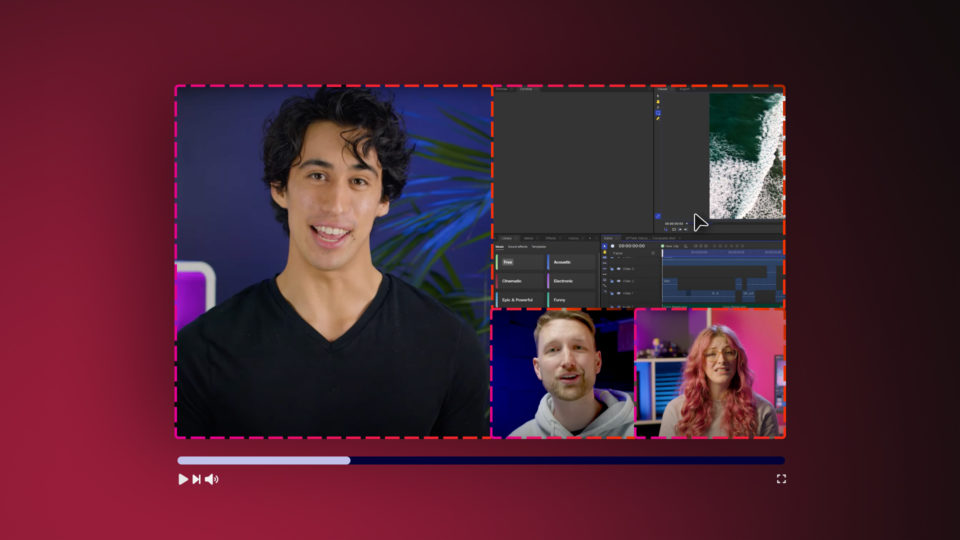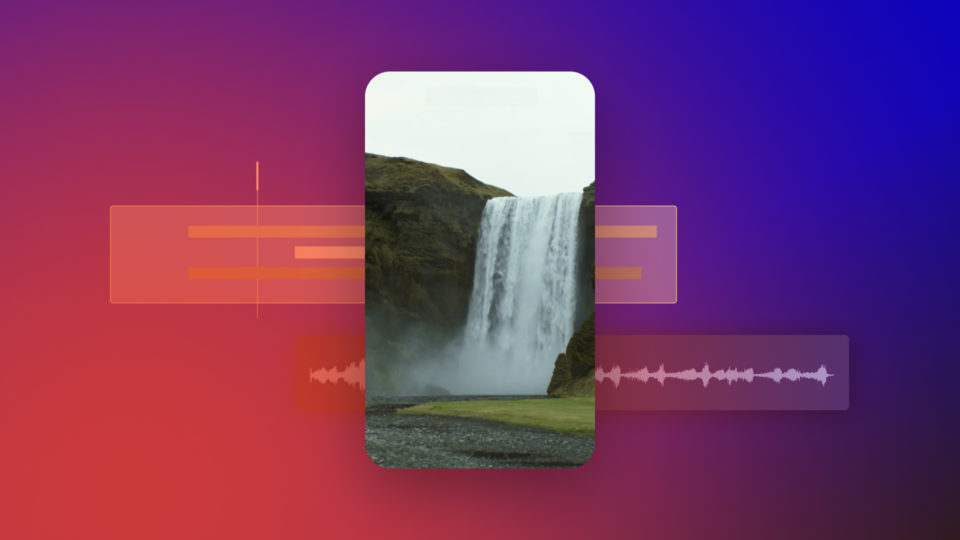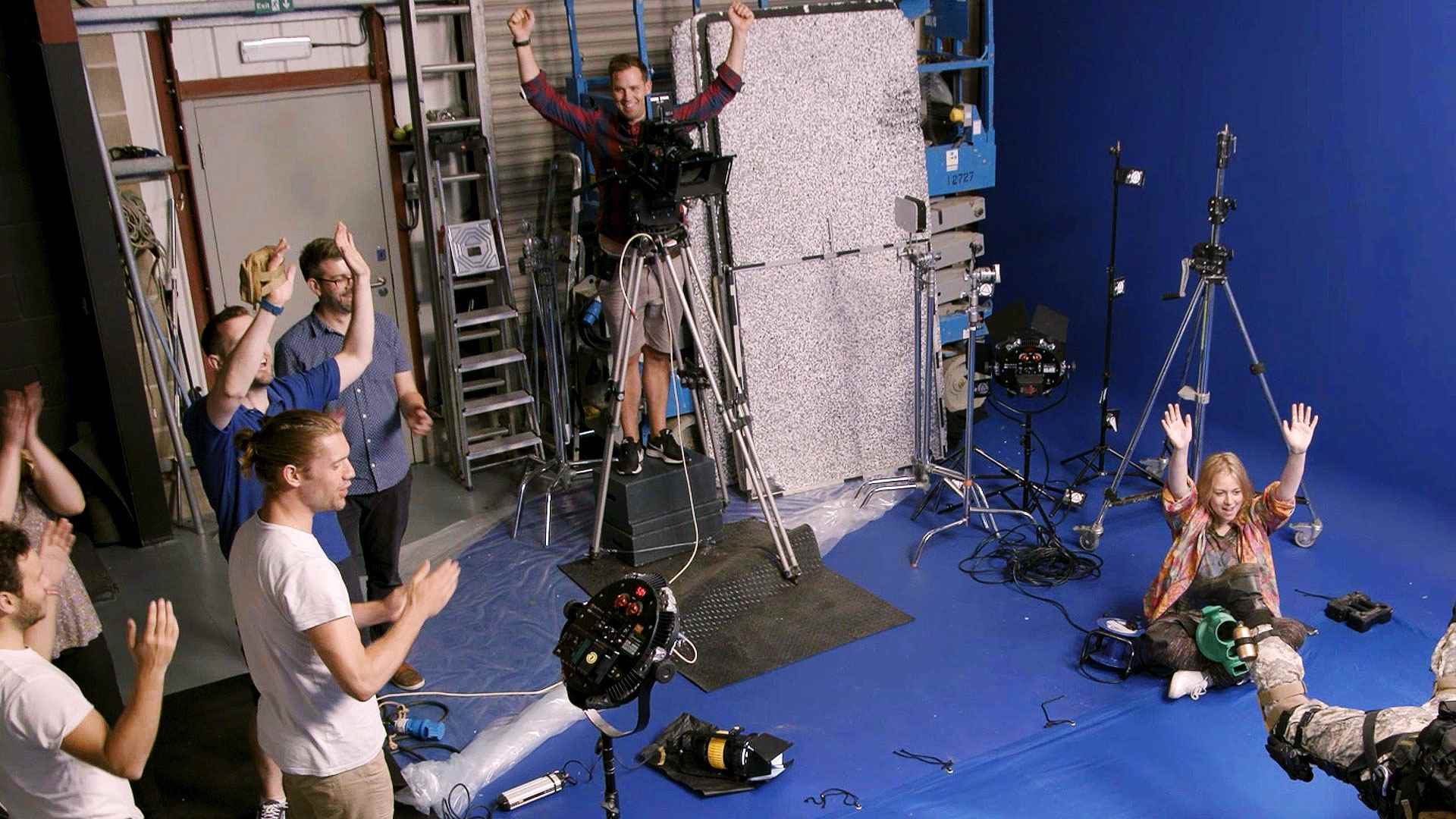Watch a movie’s end credits and the list of names is huge. Every single member of the cast or crew does an important job in making the film.
Anyone thinking of a career might wonder what all these different roles are. While varying between productions, it’s worth knowing the jobs and the nature of what they do.
Careers in Film
What should you expect in general about working on a film set?
- Productions vary in size and budget. Film companies of different levels might define roles differently and expect staff to do multiple jobs.
- Jobs are typically freelance. Staff are hired only for the duration of the project.
- Hours are irregular and long. Film schedules often demand flexibility and time away.
- Experience counts most. Practical enthusiasm while learning the ropes is also vital.
With those points in mind, let’s break down the key roles to consider…
Pre-production • Production • Cinematography • Audio • Visual Effects & Post • Art • Other
Pre-production roles
Pre-production is the time before a film shoot starts. Think of it as the planning phase, when scripts are written, actors found and locations decided ready for filming.
Scriptwriters / screenwriter: A screenwriter writes character dialog and the film’s “screenplay” based on a story idea or adaptation. Imagination and literacy are required along with a sense for scene composition.
Casting: Casting assistants and directors identify the right actors for a film roles based on the script. They spot talent, organize auditions, make showreels and submit suggested candidates to production supervisors.
Location scout: A location scout finds places or properties for filming and handles all logistics. Guided by the script, they check with local authorities to secure film permits.
Production roles
Often the longest phase, production involves the most staff. The core film production team however includes the most senior and powerful people running the show.
Executive producer: The executive producer is known as the “CEO” of the film project. They hire (and fire) everyone and mostly handle financing the film by securing investment.
Producer: More creatively involved, a producer acts as an on-set supervisor. Working in harmony with the director (hopefully) they ensure filming stays on schedule and to budget.
Director: Charged with visualizing the script or screenplay, the director is the film’s creative lead. They use artistic vision and technical skill to direct the shoot, the crew, and the cast.
Production assistant: The “PA” or “runner” role is an ideal entry-level job. They perform all manner of general tasks around production such as answering calls, making coffee, and running errands.
Cinematography roles
Cinematography is defined as the art and technology of photographing the film itself. So these guys, and girls, care most about cameras and recording every image.
Cinematographer: Also known as a director of photography (DoP), they are the image experts. Alongside the director and camera/lighting crew, the Cinematographer ensures what the camera shoots looks great.
Gaffer/Chief lighting technician: Gaffers work with DoP’s to control on-set lighting. They use an artistic eye to design lighting effects and use electrical knowledge to set up equipment.
Grip: A grip is concerned primarily with camera movement. They are experts in the mobility of camera operation and enabling every shot director needs.
Camera operator: Operating the camera itself, they actually record and capture the action. Technical filming skills are needed to frame or compose shots and move the camera accurately under direction.
Audio roles
Sound is a science in itself. A film crew isn’t just what we see and so the audio experts will capture or design every noise needed to make the picture sing.
Production sound mixer: The most senior overseer of sound recording during filming. They are responsible for balancing and capturing dialog, noises, effects, and any on-set audio ambience.
Sound recordist: Concerned with the practicality of on-set audio capture, a sound recordist positions microphones and monitors output levels.
Boom operator: Using large fluffy “boom” microphones on long poles, they capture sound out of shot during takes.
ADR mixer: Concerned with “cleaning up” production sounds and typically dialog. Noise removal and lip-synched re-dubs of speaking parts are common tasks.
Sound designer: The sound designer is expected to create new sounds for on-screen action. Artistic and imaginative, they have an almost musical sense for noises and how to compose them for dramatic impact.
Visual effects & post-production roles
Special visual effects are vital to modern, box office storytelling. VFX artists create amazing worlds and sequences after filming ends, while others finalize the film during post-production.
VFX supervisor: Manages the full visual effects pipeline and the crew of VFX artists. Interpreting the director’s creative vision, they are present during filming to evaluate shot suitability and more.
Technical director: Technical in an engineering sense, a “TD” is part VFX artist and part programmer. They usually develop new tools or write the scripts that generate complex particle effects.
VFX artist: Skilled in using VFX software like FXhome’s HitFilm, they add digital film special effects and CGI elements.
Compositor: Known also as a compositing artist, they create the final film images in post-production. Combining footage with any digital elements like VFX, a compositor ensures every shot looks great.
Animator: Modern animators use digital 3D modeling tools to create CG animated sequences. They possess technical software skills alongside a good knowledge of physics and traditional animation forms.
Matte Painter: A visual effects artist who creates believable virtual backgrounds or environments that blend seamlessly into shots.
Editor: Film or video editors select and sequence the best shots into a coherent final cut. Using software like HitFilm, editing plays an essential role in pacing the story and ensuring suitable running time.
Colorist: The colorist quite literally colors the film’s look by “grading” the picture. They apply special palettes and set luminance or saturation levels to set a cinematic mood.
Art roles
Various other artists are involved throughout. Films need talented illustrators to visualize how everything looks, people to conceive sets, design outfits, and even paint the actors!
Production designer: Applying artistic vision, they design the overall look of a production. This includes anything within a film’s visual “world” such as setting, costumes, props, and visual effects.
Art director: Working for the production designer, they instruct on implementation and construction. They oversee the build of sets, costume making, and assorted artisans to follow the overall vision within budget.
Concept artist: Coming from an illustration background, concept artists draw or paint visual ideas for the film. They produce detailed character, location, vehicle, and prop sketches that often become important guides for art direction.
Visual development artist: VDA’s are usually multi-skilled creatives who, like production designers, cover every aspect of the visual design. They often focus on defining wider mood, tone, and color elements of how an imaginary world might look.
Storyboard artist: Responsible for translating the script into a shot-by-shot sequence of drawings. These thumbnail sketches convey action in key scenes while suggesting shot framing and camera angles.
Set designer: Charged with designing and creating a film’s set. Set designers use visual arts skills, technical drawing, and model making to communicate ideas among crew and technicians.
Prop master: In charge of any moveable item used on set, they run the property department. They source objects, direct prop makers, and schedule the delivery of props to the shoot.
Costume designer: Designs and directs the manufacture of the clothing worn by characters in the film. Possessing strong artistic and fashion history knowledge, they often require tailoring and couture skills.
Makeup artist: Creates a character’s physical look by applying makeup, styling hair, or adding prosthetics. They are often certified in Cosmetology and able to illustrate makeup concepts.
Other supplementary roles
There are usually many extra roles, varying by production. Some films will have more specialist requirements above and beyond stuff like special effects and stunt work etc.
Special effects supervisor: Typically overseeing real on-set special FX, they work to design sequences like car chases for example.
Pyrotechnician: Designs, creates, and executes real explosions or controlled fires on set for the purpose of film special effects. Training and licensure are necessary over formal qualifications.
Stunt coordinator: Experienced as a senior stunt performer, a coordinator casts stunt doubles and oversees the choreography of any physical action sequences.
Choreographer: The type of choreography depends on the film, such as dance or stunts. Choreographers design and teach physical routines involving martial arts, gymnastics, and more.
Your next steps
Now you know what everyone does, what might you try to join them?
- Make a short film. Write and shoot your own little movie before editing and adding VFX for free using HitFilm.
- Go to school. Film studies, practical filmmaking and visual communications are popular courses.
- Get onto a film set. Jobs like runner or even acting extra are excellent ways to watch a shoot and meet crew.





